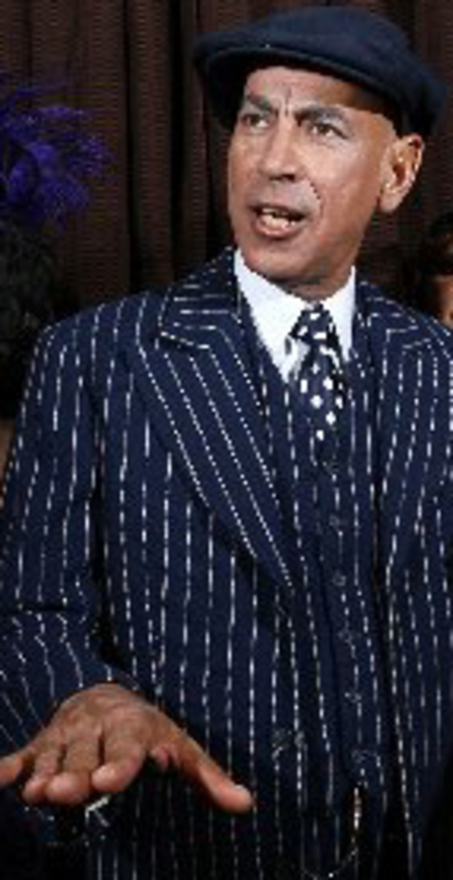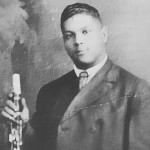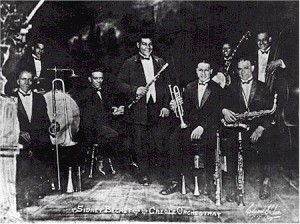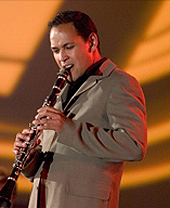
Sidney Bechet. Photo in public domain.
Largely self taught the prodigiously talented reedman Sidney Bechet developed one of the most distinctive solo voices in jazz. Unlike his contemporary and fellow New Orleans jazz giant Louis Armstrong, Bechet never achieved stardom in the United States. On this edition of Riverwalk Jazz in first person accounts based on the jazzman's autobiography, Broadway's Vernel Bagneris explores two sides of Sidney Bechet's personality that influenced his career. And soprano sax legend Bob Wilber, who studied with Bechet, joins The Jim Cullum Jazz Band to perform music associated with the artist.
Born in 1897 in New Orleans Sidney Bechet mastered the clarinet when he was only ten years old. As a boy he played in the Eagle Band, which he described as "the only band around that could play the low down blues." While still a teenager in 1917 he moved to Chicago and five years later was featured on a series of ground-breaking recordings with Louis Armstrong, known as Clarence Williams' Blue Five.
In the mid-1920s Bechet began to travel and perform throughout England, France, Germany and Russia. Outside a nightspot in Paris, he was brawling with another musician when a gun fight broke out. Three people were wounded and Sidney spent a year in a French jail. In 1931 he was deported back home to America.
Throughout the 30s and 40s Sidney Bechet worked and recorded back in the U.S. in groups led by Tommy Ladnier, Mezz Mezzrow and Eddie Condon among others, but rarely under his own name. Then in 1945, to bolster his finances, Bechet began teaching music in Brooklyn. Bob Wilber, a high school student from upscale Westchester County, Connecticut became his star pupil. A long-time leading exponent of the Bechet-style on soprano saxophone and clarinet, Bob Wilber is heard here performing classics from Bechet's body of work.

Vernel Bagneris. Photo courtesy of the artist.
Also on the bill is clarinetist Evan Christopher, a disciple of New Orleans-style clarinet. Between live music performances, actor Vernel Bagneris presents scenes from Sidney Bechet’s life, told in Bechet's own words, from his autobiography Treat It Gentle, published by DaCapo Press.
Sidney Bechet found the success he craved late in life. Though he recorded and performed widely in the United States, he would never earn the recognition he hoped for at home. In June 1950 he returned to France and the stocky, silver-haired Bechet was suddenly a celebrity. He found a new, young audience eager to embrace his music and make him a star. Fans waited in long lines at every concert. Sidney Bechet made France his home for the rest of life.
Photo credit for Home Page: Paris Poster: Club du Vieux Colombier, 1952 by Pierre Merlin courtesy of Historic New Orleans Collection.
Text based on Riverwalk Jazz script by Margaret Moos Pick ©2012




